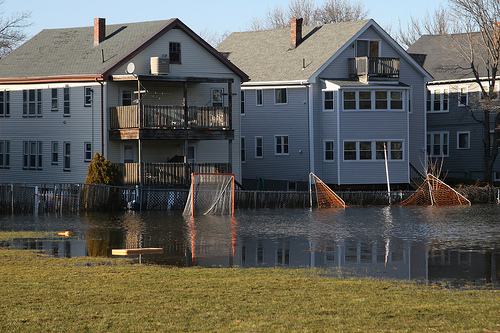Deflecting Disaster with Water Leak Detection
Portable water is not just a valued amenity in today’s society — it’s also integral to daily life. American cities have poured countless dollars into developing a municipal infrastructure capable of delivering water to every resident and every construction. It’s a service often taken for granted, but it requires considerable upkeep to maintain the system and keep water delivery and management safe and effective.
In any municipal water system — and particularly over time — leaks pose a growing threat. If potential or existing leaks are ignored, water can lead to significant damage in several different forms. Even at the residential or commercial building level, an undetected or ignored leak could lead to huge repair costs and even compromise the structural integrity of the building.
Despite these risks, too many building owners and local governments turn a blind eye to water leaks until they can’t be ignored any longer. By that time, immense damage has likely occurred. That’s why a proactive approach to leak detection and repair is so important.
Advanced technology can help identify leaks that may not be apparent from the surface, drastically reducing the potential damage of a single leak. This water leak detection is a worthwhile investment for any property owner, paying for itself in the form of repair cost savings. Here’s a brief guide on the leak risks property owners face, and how to address this very real threat.
Home and Business Leak Threats
Individual homes and buildings face a number of risks when it comes to water leaks. These leaks could develop in water service lines, well heads, interior pipes and pipes under concrete, sewer lines and even hot tubs and pools. The potential damage caused by a leak is affected by several factors, including the location of the leak, its size, and the amount of time it is allowed to persist. In various instances, homes and other buildings could suffer from foundation erosion, interior water damage and the development of mold.
Simple water leak detection practices save homeowners hundreds of thousands of dollars every year. But that’s not all that’s necessary to avoid water leak troubles. Individual buildings can also by affected by municipal leaks that get out of hand.
Municipal and Public Safety Risks
Leaks in community water systems can happen a number of ways. In addition to the gradual aging of pipes and systems, construction sometimes causes disruptions. Some other common risks include leaks in fire supply lines, fire hydrants, and buried tanks and drums storing water.
In some cases — particularly when dealing with buried storage containers — leaks are hard to detect until a lot of water has been lost. By then, problems are mounting fast. That’s why many municipal governments are recognizing the value of using water leak detection technology to catch these problems as soon as they start.
San Francisco learned the hard way, when a burst water main eroded the ground and caused a city street to cave in. Meanwhile, water rushed through neighboring garages and basements, setting off car alarms and waking residents at three in the morning. One home had even just finished remodeling when flooding waters damaged everything. Proper leak detection could have identified this leak before it worsened and caused so much damage to the street and neighboring houses.
Smithville, Tennessee took measures to avoid such a fate. While a specific leak could not be found in its municipal water system, water loss reports suggested that at least one leak was active underground. This leaking occurred despite a $2.8 million renovation of the city’s water system. The city invested in water leak detection technology to identify the leak before things got out of control. And thecost of the equipment was only $3,000.
Spotting a Leak and Taking Action
If you’re concerned about leaks that may not be visible to the naked eye, your best bet is to invest in technology that can identify leaks throughout a water system. Infrared inspection and ground-penetrating radar can both be used to locate leaks without digging up the ground and making a mess. This technology will help you see the location of a leak and its severity, allowing you to respond faster with emergency procedures that mitigate damage and reduce water loss — all while making the leak repair process faster and more efficient. And the quicker detection and response will save countless dollars that would otherwise go toward repairs.
Any water leak will eventually make itself known over time, but not before causing extensive damage and even putting the public safety at risk. Whether you’re a property owner or a local government, water leak detection is an easy process that can save money and other valuable resources, including your local water supply. Contact your local leak detection provider today to find out how to avoid this silent disaster from striking.
Photo credit: Doc Searls



